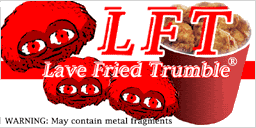ClymAngus wrote:One small thing about the cargo pods. Can we have some as standard that actually fit together properly please? the 5 pointers just don't cut it.
Well - following the neolite doctrine, we'd need to imagine that the shape of the model is somehow representative of the way the actual cargo pod looks.
There are loosely pentagonal storage containers in real life - picture, if you will (or, if you won't, I'm easy) a regular sea chest. This is basically a box with a rounded lid. These stack about as well as the pentagonal prism, with similar effect.
There are other awkward shapes in common use - a barrel is round, and bulges in the middle. Some are oval in cross-section. Typically containing things which can be poured - from wine to tacks. Then there's amphorae. A great deal used to be shipped in these things, yet they don't even stand up, never mind stack nicely.
Of course - by "stack" I'm guessing you mean some sort of tessellated arrangement. So you'd be thinking along the lines of hexagons, triangles, or parallelograms.
Modern shipping containers are big boxes - in a ship, they are not usually closely stacked - you need a gap for the crane. Their shape is usually to facilitate trucking to and from the ports.
The shape of the standard cargo-pod may imply existence of some sort of standard fitting for cargo-holds. It needn't be the most efficient, just commercially successful. Perhaps Cargopod Inc makes it's money selling robotic cargo management systems for installation in ship's holds (you can jettison
individual containers note) and the pod shape reflects this - it could be form a kind of vendor lock-in for their system, forcing everyone to adopt a similar shape for their own pods, or just an interstellar standard for something (like the size of a CD hole).
Using the sea-chest as a model would suggest that the cargopod is intended to be accessed via two of it's sides while it rests on another side. The bottom is smaller than the overall width because it has to fit a cradle or some sort of support booms, which would also facilitate robot forklifts and waldo-units moving the cargo around.
You get decent stacking if you line up the first row, then invert the second. The resulting double row has a flat top.
But without gravity, there are other options: you get nice fractal designs by grouping five pods so one edge of each points to a common center (then repeat with the larger structure). There are star-haped holes in the first iteration - which get more complicated as you get bigger - depending on the exact arrangement. The holes could suggest some sort of structure of the hold to support them - or, maybe, are characteristic of some sort of force feild.
So you see, I've been thinking about it.




